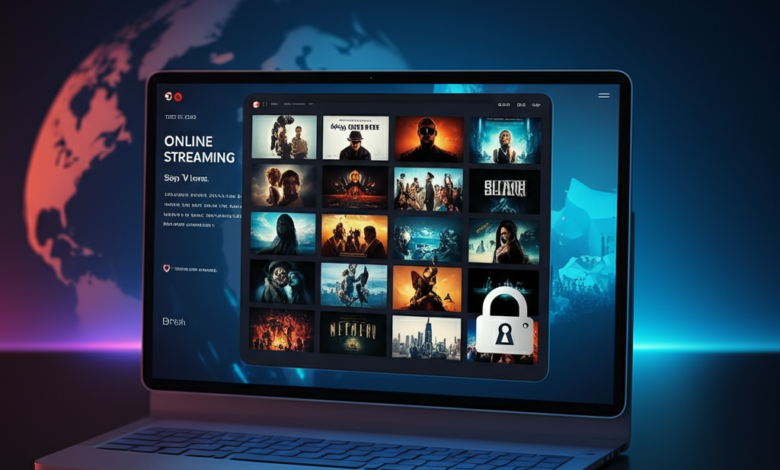The Truth About 1tamilmv.prof for Streaming Movies and Shows

When it comes to streaming movies, TV shows, and other entertainment, countless websites claim to provide convenient options. Among these, 1tamilmv.prof has gained significant attention among movie buffs and streaming enthusiasts. But what exactly is this platform? What does it offer, and are there risks involved in using it?
This guide dives into the features, concerns, and alternative platforms related to 1tamilmv.prof, helping you make informed decisions about your entertainment needs.
What Is 1tamilmv.prof and What Does It Offer?
1tamilmv.prof is a platform known for providing free streaming and downloads of movies and TV shows, including Tamil, Telugu, Hindi, Malayalam, and even international content. While the website is particularly popular for its extensive catalog of South Indian films, it also offers Hollywood blockbusters, dubbed content, and web series.
The appeal of this platform lies in its wide variety of content, often made available shortly after release. Users are tempted by the promise of high-quality streams, fast downloads, and convenient access to trending titles without a subscription fee.
However, the legal status of this website raises a significant question—which we’ll explore further in this article.
Content Categories on 1tamilmv.prof
The library on 1tamilmv.prof caters to diverse entertainment tastes. Some of the primary content categories include:
- Tamil Movies: From classic films to the latest theater releases, the site features a deep catalog of Tamil cinema.
- TV Shows and Web Series: Users can stream popular shows, including dubbed international series.
- Bollywood & Hollywood Content: From Hindi classics to blockbuster Hollywood movies, the collection is presented in multiple languages, such as Hindi and Tamil dubs.
- Regional Cinema: Telugu, Malayalam, Kannada, and Marathi films also feature prominently, satisfying fans of Indian regional languages.
- Music Albums: Beyond films, the site sometimes offers downloadable movie soundtracks or independent albums.
While the variety is undoubtedly enticing, accessing such content without a legal license creates serious ethical and legal concerns.
How to Navigate the Site (and Its Pitfalls)
For users, navigating a site like 1tamilmv.prof requires some effort. Often, such platforms clutter their interfaces with ads and pop-ups, creating a frustrating experience. Here’s how users typically find and stream content:
- Search Bar: Most users rely on a simple search for titles or keywords.
- Category Filters: You can browse by language, genre, or release year to narrow options.
- Streaming Links: Most content is either streamed online or downloaded via torrent links.
While the basic premise sounds simple, challenges such as annoying ads or potential malware risks make using such websites less than ideal.
Content Quality: Video and Audio Experience
Many users report variable quality when streaming or downloading from 1tamilmv.prof. Here’s what you might expect:
- Video Quality: Content is available in different resolutions, ranging from 360p (low quality) to 1080p HD. However, options like 4K streaming are often absent.
- Audio Quality: Audio is usually acceptable, but it may not offer immersive sound formats like Dolby Atmos.
It’s worth noting that quality often depends on the source material, and not everything matches up to the standards of legitimate platforms.
Is It Safe (or Legal) to Use 1tamilmv.prof?
Here’s the critical truth about using platforms like 1tamilmv.prof:
- Legal Risks: Accessing or downloading copyrighted material from unauthorized websites is illegal in many countries. It can lead to penalties ranging from warnings to fines or even legal actions.
- Cybersecurity Risks: These platforms are often riddled with malicious ads, fake download buttons, and risky redirects. Without proper precautions (like antivirus software), users risk exposing personal data or infecting their devices.
Many users turn to VPNs to hide their IP addresses while browsing such sites. While a VPN can offer anonymity, it doesn’t make illegal activities legal.
User Experience and Design
When browsing websites like 1tamilmv.prof, the following user experience factors come into play:
- Website Design: The interface is often cluttered with intrusive ads, affecting navigation.
- Ads Overload: Excessive pop-ups and redirects are almost guaranteed.
- Mobile Compatibility: While mobile users can access the platform, the experience is subpar compared to dedicated streaming apps.
All told, these usability issues may leave users longing for more seamless alternatives.
Legitimate Alternatives to 1tamilmv.prof
Streaming enthusiasts have numerous legitimate options that provide high-quality, secure, and legal access to movies and TV shows. Here are a few:
- Netflix, Amazon Prime Video, and Disney+ Hotstar: These subscription platforms offer extensive libraries across languages and genres, including premium originals and popular South Indian titles.
- ZEE5 and Sun NXT: Focused on Indian cinema, these platforms host regional hits alongside shows and music tailored for specific audiences.
- MX Player: A fantastic free option with ad-supported content, catering to those who prefer not to subscribe.
- YouTube: Many independent creators, short films, and classic movies are free to watch legally on YouTube.
These platforms might come with a price tag, but the peace of mind, superior quality, and vast libraries make them worth it.
Summing It Up: What You Should Consider
Platforms like 1tamilmv.prof may seem like a quick fix for entertainment, but their associated legal and safety risks outweigh the convenience. By choosing legitimate streaming services instead, movie buffs and entertainment enthusiasts can enjoy premium content while respecting the creative efforts of filmmakers and producers.
